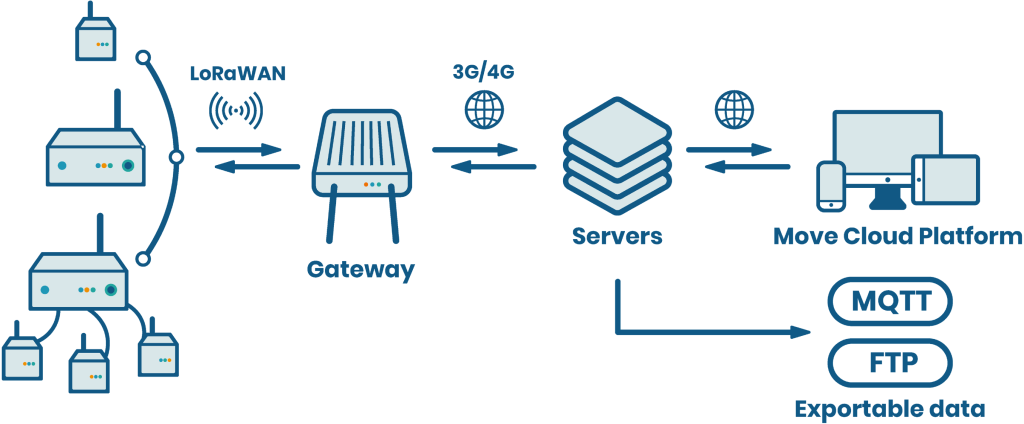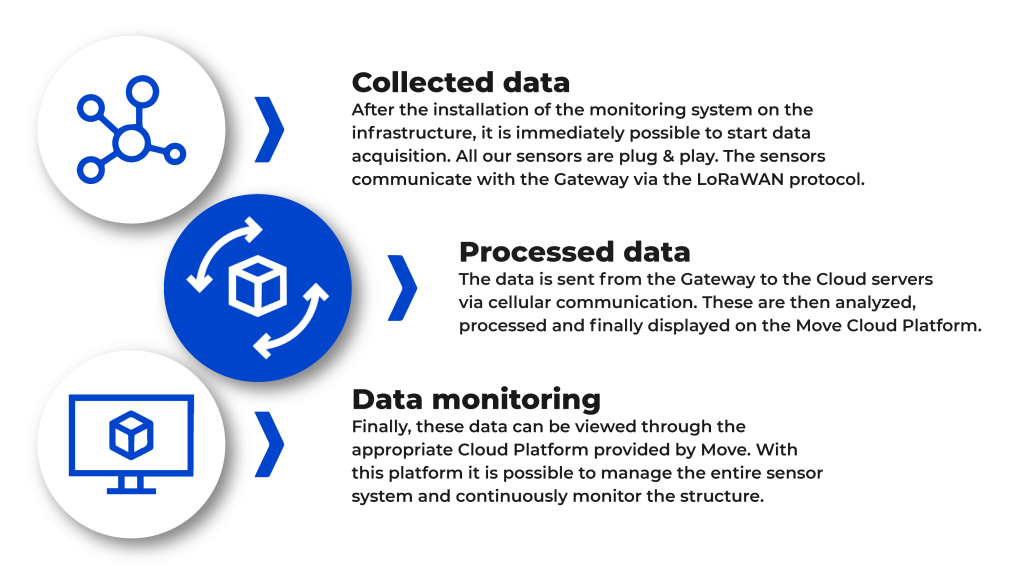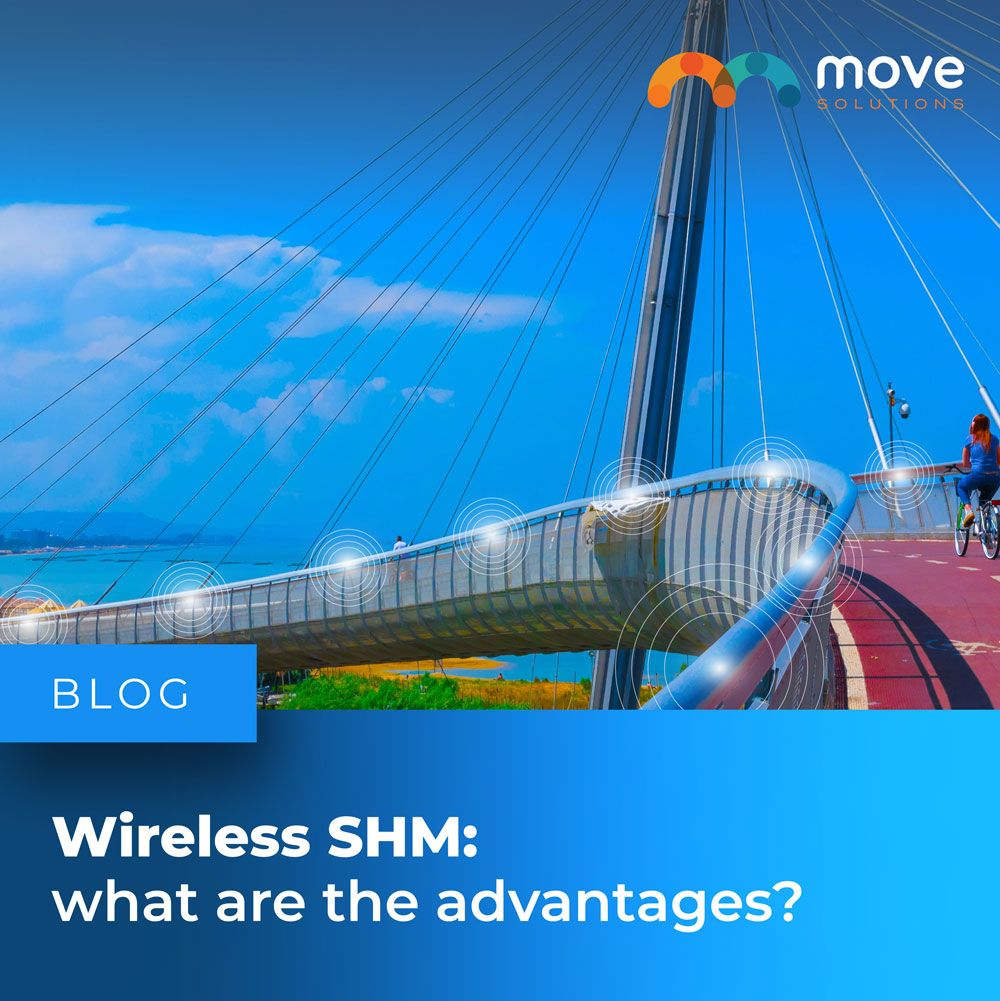Wireless SHM: what are the advantages?
June 2022
In recent years, wireless structural monitoring has emerged as a promising technology that is greatly impacting the field of SHM and infrastructure asset management.
One of the biggest benefits of using wireless sensors is the easy and cost-effective installation: they can be placed throughout the structure without running cables through floors, walls and ceilings. It is particularly useful for infrastructures like bridges, where wired sensors would require expensive and complex installations, or for railways, where the sensors are spread out over a large area.
Wireless monitoring systems use built-in radio transmitters, allowing you to add new sensors without running additional wiring.
Let’s go into details
Move Solutions offers the first and only wireless monitoring system that combines static and dynamic monitoring solutions in a battery-powered package , simple to install and to manage. Consisting of different types of wireless sensors bundled with a software suite – called Cloud Platform – it forms a complete ready-to-use system.
All sensors are wireless, communicate via a low-power, long-range protocol called LoRaWAN, and are powered by an internal battery. Having a very low absorption, the battery lasts for years (2-10 depending on the device and the use) and the replacement is cost-effective and practical. Because they have no wiring, for both power supply and data communication, the sensors are presented as closed little boxes ready for installation, which can be done quickly via two screws with plugs (included) both indoors and outdoors. Thanks to their IP67-IP68 waterproof rating, Move Solutions devices are totally protected from dust, sand and in general from any granular solid, as well as from humidity and rain.
The sensors are supplied already switched on, in a low energy consumption mode, and when also the Gateway is switched on, they connect automatically and start transmitting data immediately.
The Gateway receives all the data from the sensors and uploads them to the Cloud, via an internet connection, via a sim or an ethernet / wi-fi connection. Once the sensors and Gateway are installed on site, the system is ready to detect, transmit and store data.

Wireless system architecture
All the recorded data can be viewed on Move Solutions Cloud Platform, which allows you to remotely monitor your structure from where you are and in real-time. Through the Cloud Platform the user can set different operating parameters of each sensor, such as sampling rates, resolution and full scale, alarm and activation thresholds, and much more. Algorithms created ad hoc for structural analysis are able to process the data and convert them into useful information and graphs in order to better understand the status of the structure and simplify the whole monitoring process.
The system offers constant monitoring of the health of the structure and the creation of archives of the collected data which accessible at any time.

In summary, wireless monitoring systems are creating a whole new way of doing Structural Health Monitoring: easier, safer, more efficient and cost-effective!
What makes Move Solutions one step ahead within this already innovative field? We are the only ones that can provide not only Static, but also Dynamic Structural Monitoring!









